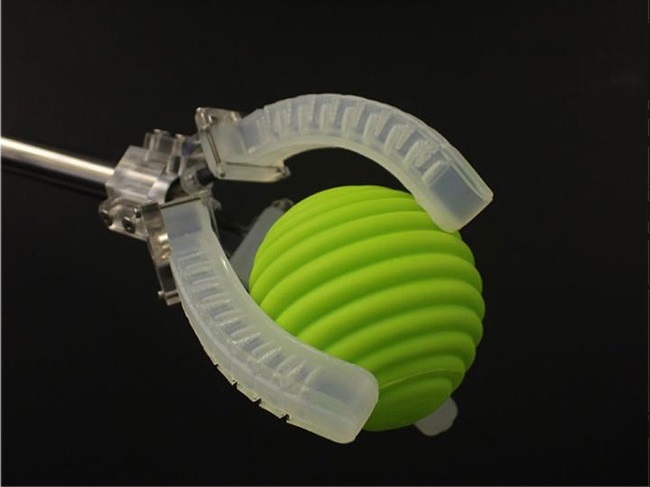
Soft robots that can sense touch, pressure, movement, and temperature
A soft robot inspired by nature that can crawl, swim, hold delicate objects and also assist a beating heart invented at Harvard University. Researchers from the Harvard John A. Paulson School of Engineering and Applied Sciences (SEAS) and the Wyss Institute for Biologically Inspired Engineering developed a platform for creating soft robot with embedded sensor. The sensors are able to sense movement, touch, and temperature.
“Our research represents a foundational advance in soft robotics,” said Ryan Truby, first author of the paper and recent Ph.D. graduate at SEAS. “Our manufacturing platform enables complex sensing motifs to be easily integrated into soft robotic systems.”
Researchers developed an organic ionic liquid-based conductive link using 3D-printer due to facing problem in integrating sensor because of rigid structure.
“To date, most integrated sensor/actuator systems used in soft robotics have been quite rudimentary,” said Michael Wehner, former postdoctoral fellow at SEAS and co-author of the paper. “By directly printing ionic liquid sensors within these soft systems, we open new avenues to device design and fabrication that will ultimately allow true closed-loop control of soft robots.”
“This work represents the latest example of the enabling capabilities afforded by embedded 3D printing – a technique pioneered by our lab,” said Lewis.
“The function and design flexibility of this method is unparalleled,” said Truby. “This new ink combined with our embedded 3D printing process allows us to combine both soft sensing and actuation in one integrated soft robotic system.”
For the testing of sensors, researcher’s team printed a soft robotic gripper comprised of three soft fingers or actuators. For sensing inflation pressure, curvature, contact, and temperature researchers tested the gripper’s ability. By embedded multiple contact sensors, gripper could sense light and deep touches.
“Soft robotics is typically limited by conventional molding techniques that constrain geometry choices, or, in the case of commercial 3D printing, material selection that hampers design choices,” said Robert Wood, the Charles River Professor of Engineering and Applied Sciences at SEAS, Core Faculty Member of the Wyss Institute, and co-author of the paper. “The techniques developed in the Lewis Lab have the opportunity to revolutionize how robots are created — moving away from sequential processes and creating complex and monolithic robots with embedded sensors and actuators."
Further, the researchers hope to use the power of machine learning to train these devices to hold objects of different size, shape, surface texture and temperature. The research was co-authored by Abigail Grosskopf, Daniel Vogt, and Sebastien Uzel, and also got the support from National Science Foundation through Harvard MRSEC and the Wyss Institute for Biologically Inspired Engineering.

